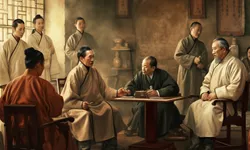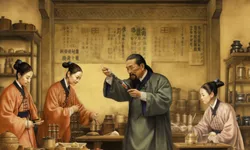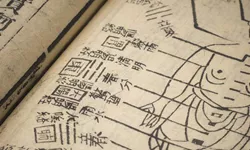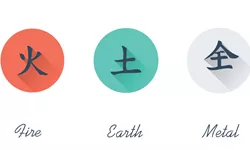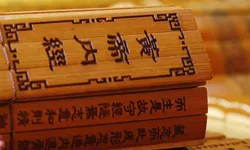Traditional Chinese Medicine (TCM) has been a beacon of Eastern healing traditions for centuries, each element weaving an intricate narrative of the holistic understanding of human health. One such thread in this intricately woven tapestry is pulse diagnosis, a specialized method central to TCM's diagnostic techniques. Standing at the pinnacle of pulse science in TCM is "The Pulse Classic" or "Mai Jing," revered as the most influential work in this area of study.
Wang Shuhe: The Resolute Mind Behind the Mai Jing
The man behind the Mai Jing, Wang Shuhe, is a testament to a life devoted to the practice and expansion of TCM. Born in Gaoping, present-day Weishan County in Shandong province, China, Wang spent his early years honing his skills as a traveling doctor during the Wei and Jin Dynasties around the 3rd century AD. His exceptional medical abilities soon led to his appointment as a doctor of medicine. Some historians speculate that Wang was even appointed the minister of imperial medical affairs of the Wu Kingdom, deduced from the emperor's reign title as recorded by Huang Fumi and Jingzhou's attribution.
Often viewed as a disciple of Zhang Zhongjing, the influential author of one of TCM's "Four Classics," the Shang Han Lun or "Treatise on Cold Damage Disorders," Wang Shuhe furthered his master's work. He is credited for rearranging and compiling Zhang's monumental work, enhancing its relevance and applicability.
The Mai Jing: Crafting the Cornerstone of Pulse Science
Despite his accomplishments in the broader field of TCM, Wang Shuhe's lasting legacy is indubitably his comprehensive summary of pulse science encapsulated in the Mai Jing. This pivotal work laid the foundations for the development of pulse science in China, and to this day, it remains a specialized method in TCM. The very title of Mai Jing is indicative of its importance, implicating its status as a medical canon or 'Jing,' and situating it on par with other TCM cornerstones such as the Nei Jing and the Nan Jing.
The Mai Jing is structured into ten scrolls, known as "juan", all meticulously compiled into four volumes. This groundbreaking work introduces the theoretical underpinnings of pulse science and then takes the reader on an in-depth tour of pulse diagnosis for various disease states. This detailed exposition is the foundation for the text's reputation as the earliest and most comprehensive treatise on pulse diagnosis in Chinese medicine.
The first juan sets the stage, initiating the reader into the art of pulse diagnostics. The subsequent scrolls lay out the specifics of various pulse types and delve into how they correspond to different disease states. By the time we arrive at juan 10, we're deep in the complexities of the "three-yang right foot" and the "three-yin right hand" pulses. This organization allows for an immersive learning experience, starting from foundational knowledge and culminating in the subtleties of specialized pulse diagnostics.
However, the Mai Jing's seminal position did not make it an easy text to digest. Even at the time it was written, TCM practitioners found the text challenging to read and memorize. Recognizing this, in the Northern Song dynasty, Gao Yang Sheng crafted a song from it - "Wang Shuhe Maijue" - to aid comprehension. This song version of the Mai Jing, simple and easy to understand, served as a catalyst for the text's widespread popularity and adoption among TCM practitioners.
The Pulse Uncovered: Wang Shuhe's Profound Insights on Pulse Diagnostics
Wang Shuhe's innovative thinking is evident in the Mai Jing. He proposed the theory of "three parts for the internal organs" and established the "Cunkou pulse diagnosis method." His categorization of twenty-four pulse types into "seven exteriors,” “eight interiors,” and “nine ways ” guided pulse diagnostics from the Northern Song dynasty until it was replaced by Li Shizhen's twenty-seven pulse type framework in the late Ming dynasty.
But the Mai Jing's value extends beyond mere categorization. The treatise is a trove of clinical wisdom, connecting pulse diagnosis with the treatment of various diseases. Wang's text dives deep into the specifics of pulse shapes, detailed symptoms, and a hundred of disease states. It exemplifies the integration of theoretical knowledge with practical clinical application, truly embodying the spirit of TCM.
The Enduring Impact of The Mai Jing and its Relevance Today
The impact of the Mai Jing extended beyond the borders of China relatively early, reaching Korea and Japan during the Sui and Tang dynasties. A Japanese physician compiled the Datonglei Jufang, incorporating the contents of the Mai Jing, in 808 AD.
The relevance of the Mai Jing persists today, not just as a historical document, but also as a practical manual for TCM practitioners. Despite its challenging language, Wang's seminal work remains an invaluable guide for those committed to the exploration of TCM and wishing to understand pulse diagnosis.
Article tags: Chinese Medicine theory



